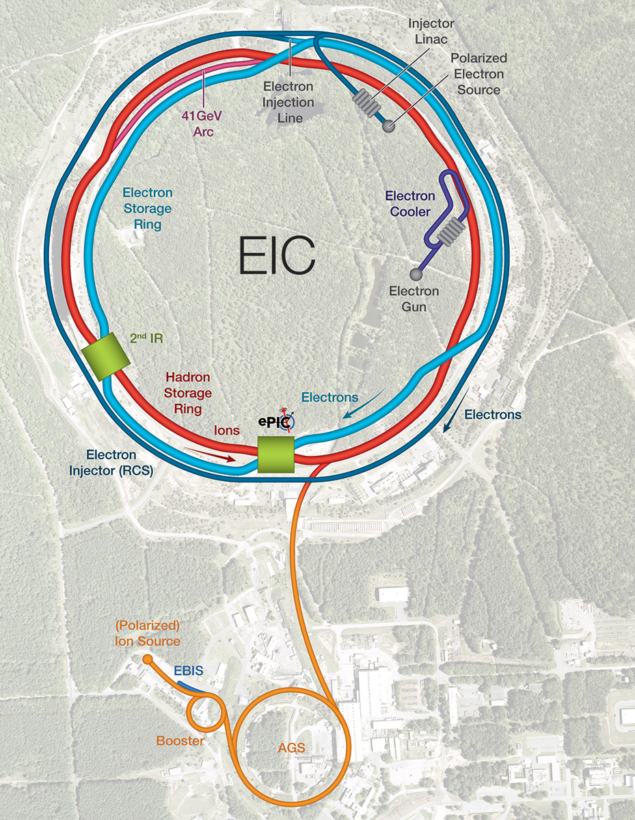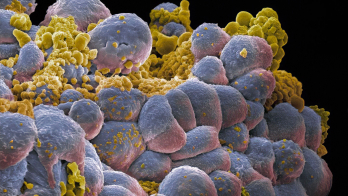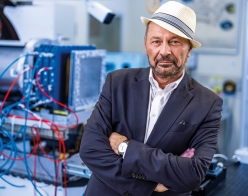
The Electron–Ion Collider (EIC), located at Brookhaven National Laboratory and being built in partnership with Jefferson Lab, has taken a step closer to construction. In April the US Department of Energy (DOE) approved “Critical Decision 3A”, which gives the formal go-ahead to purchase long-lead procurements for the facility.
The EIC will offer the unique ability to collide a beam of polarised high-energy electrons with polarised protons, polarised lightweight ions, or heavy ions. Its aim is to produce 3D snapshots or “nuclear femtography” of the inner structure of nucleons to gain a deeper understanding of how quarks and gluons give rise to properties such as spin and mass (CERN Courier October 2018 p31). The collider, which will make use of infrastructure currently used for the Relativistic Heavy Ion Collider and is costed at between $1.7 and 2.8 billion, is scheduled to enter construction in 2026 and to begin operations in the first half of the next decade.
By passing the latest DOE project milestone, the EIC project partners can now start ordering key components for the accelerator, detector and infrastructure. These include superconducting wires and other materials, cryogenic equipment, the experimental solenoid, lead-tungstate crystals and scintillating fibres for detectors, electrical substations and support buildings. “The EIC project can now move forward with the execution of contracts with industrial partners that will significantly reduce project technical and schedule risk,” said EIC project director Jim Yeck.
More than 1500 physicists from nearly 300 laboratories and institutes worldwide are members of the EIC user group. Earlier this year the DOE and the CNRS signed a statement of interest concerning the contribution of researchers in France, while the UK announced that it will invest £58.8 million to develop the necessary detector and accelerator technologies.







